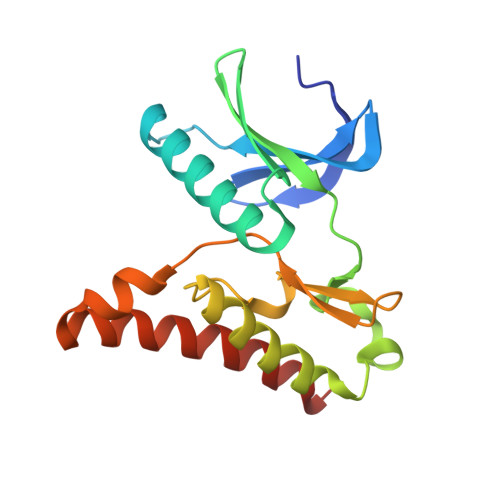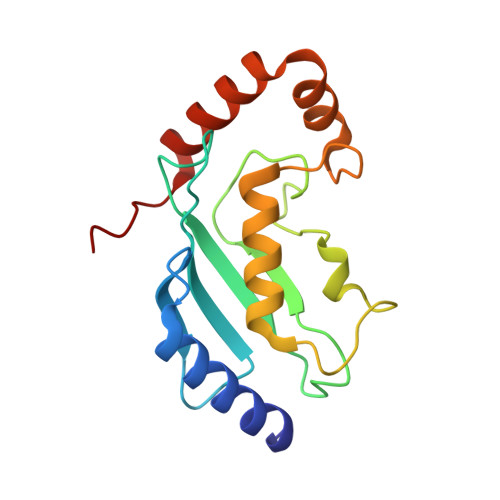Structural Basis for the Inhibition of Host Protein Ubiquitination by Shigella Effector Kinase OspG.
Grishin, A.M., Condos, T.E., Barber, K.R., Campbell-Valois, F.X., Parsot, C., Shaw, G.S., Cygler, M.(2014) Structure 22: 878-888
- PubMed: 24856362
- DOI: https://doi.org/10.1016/j.str.2014.04.010
- Primary Citation of Related Structures:
4Q5E, 4Q5H - PubMed Abstract:
Shigella invasion of its human host is assisted by T3SS-delivered effector proteins. The OspG effector kinase binds ubiquitin and ubiquitin-loaded E2-conjugating enzymes, including UbcH5b and UbcH7, and attenuates the host innate immune NF-kB signaling. We present the structure of OspG bound to the UbcH7∼Ub conjugate. OspG has a minimal kinase fold lacking the activation loop of regulatory kinases. UbcH7∼Ub binds OspG at sites remote from the kinase active site, yet increases its kinase activity. The ubiquitin is positioned in the "open" conformation with respect to UbcH7 using its I44 patch to interact with the C terminus of OspG. UbcH7 binds to OspG using two conserved loops essential for E3 ligase recruitment. The interaction of the UbcH7∼Ub with OspG is remarkably similar to the interaction of an E2∼Ub with a HECT E3 ligase. OspG interferes with the interaction of UbcH7 with the E3 parkin and inhibits the activity of the E3.
Organizational Affiliation:
Department of Biochemistry, University of Saskatchewan, 107 Wiggins Road, Saskatoon, SK S7N 5E5, Canada.
















